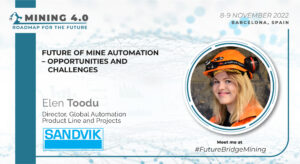The push to decarbonize brings a number of pressures to bear on the mining industry. The logistical cost of extraction and transportation already exceeds the emissions of some entire industries, but mines take other tolls on the environment. Even when a mine closes, steps must be taken to ensure that the area is not ruined or contaminated. It’s vital that industry leaders learn the best methods and technologies that help rehabilitate mine sites upon closure.
What happens to a site upon closure?
While in the past, ore or minerals running out just meant a cessation of profits, now miners need to plan ahead. There are both economic and social changes that happen when a mine closes, and both should be planned for at the outset of mine construction. Operations do tend to disrupt the environment, soil, and other elements of the area. Chemicals end up in the ground, plant life is removed and human activity might interfere with wildlife.
Similarly, if the workforce is local, people might become jobless. The local economy might take a hit as cottage industries, from gas stations to grocery stores, lose business. The company also has to decide what to do with the land itself, which can have long-lasting effects on the social composition of the area. The bottom line is that mining companies need to have plans in place before the site enters full operation.
What should be included in a closure plan?
From a purely environmental standpoint, land rehabilitation and post-closure monitoring are the minimum that needs to be considered. Mines, naturally, disrupt ground and surface water, which should be cared for both during and after general operations. If the mine is designed properly, water-supply disruptions can be mitigated at the design stage, saving resources and effort later. Companies have the incentive to ensure that lingering damage to the area is removed to protect themselves from reputational harm and litigation.
Furthermore, companies that have demonstrated the ability to rehabilitate unused sites may find less resistance in the long run when establishing new sites near populated areas. Regardless of preference, environmental agencies and governments are starting to consider mandatory closure standards. Since most mines operate for a while, the industry needs to have plans in place now, so future closures will be less costly. In the long term, learning how to close effectively will also save time and costs.
How can it be done effectively?
When surveying the site, mining companies can assess how and where they will disrupt the environment. This can help plan for mine construction that will limit closure costs as much as possible. This will also help predict costs which can mean that the company will be ready to cover the necessary procedures when it comes to rehabilitation. In general, knowing what to expect will help at every level of operations and will no doubt come with cost savings.
Regarding social questions, stakeholders can be consulted in advance and kept up to speed as the project progresses. If a company wants to go the extra mile, regulators can be consulted and engaged as well, to get a better picture of what they might find important. Clear communication with locals will help them better prepare for site closure, mitigating their potential discomfort at almost no cost to the company.
What should companies keep in mind regarding closure?
The main thing to remember and keep track of is the need to have a plan beforehand. From surveying, monitoring, and land rehabilitation, the technology is developing rapidly as different companies want to board the decarbonization train. Industry leaders need to stay up to date with developments to create the best roadmaps to guide their companies into the net-zero future.
Industry leaders can benefit from meeting and interacting with peers from around the world to share the best insights and experiences. Join key decision-makers at the Efficient Mining Operations Summit in Barcelona, Spain from May 4th to 5th to learn more. Visit future-bridge.eu or mining-events.com and follow us on our social media to keep track of other events about sustainability in the mining and metals industry.





